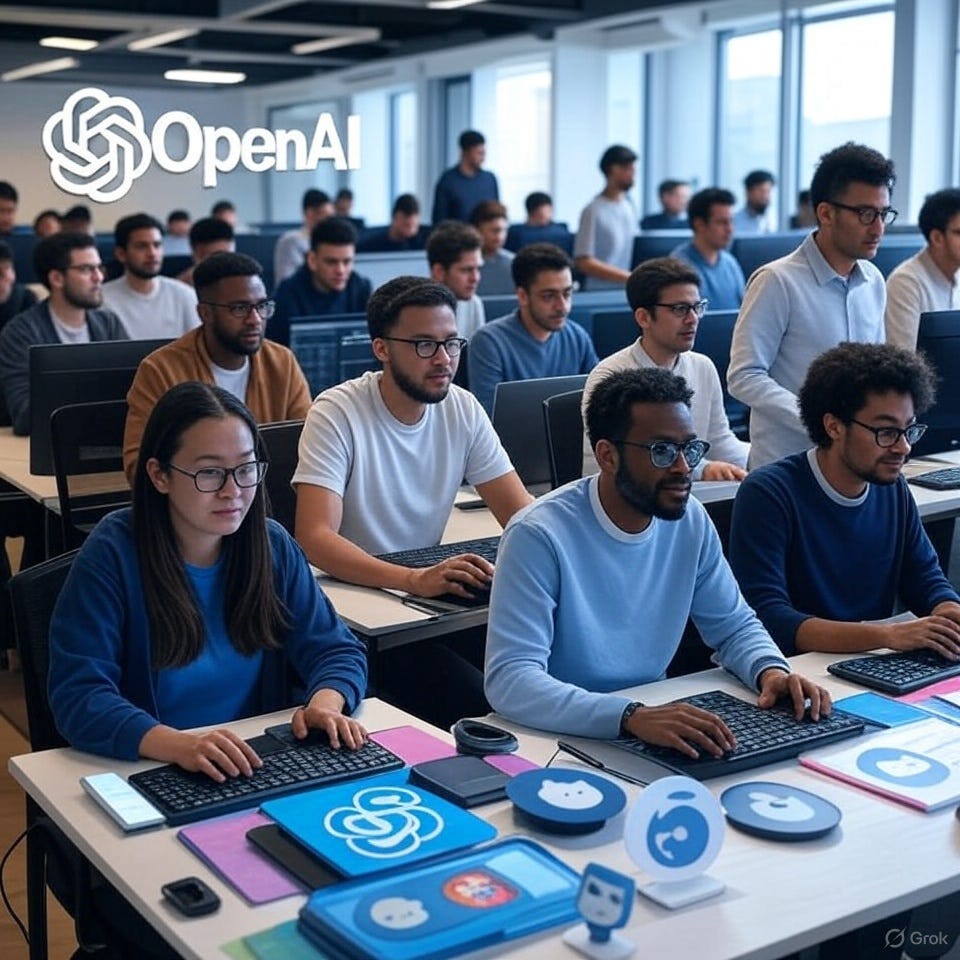OpenAI, the developer behind ChatGPT, announced the release of two new artificial intelligence models, named gpt-oss-120b and gpt-oss-20b, which are freely available for download and customization by developers. This move marks a significant shift for the San Francisco-based company, which has traditionally kept its AI technology closely guarded, and positions it as a direct competitor to Meta and Chinese startup DeepSeek in the growing field of open-weight AI models.
Unlike OpenAI’s previous “closed” models, such as those powering ChatGPT, these new “open-weight” models allow developers to modify and fine-tune them for specific applications. Open-weight models provide access to the model’s parameters, enabling customization, but stop short of being fully open-source, as the underlying code and training data remain proprietary. OpenAI’s decision comes as Meta’s Llama models and DeepSeek’s offerings have gained traction for their accessibility, spurring innovation in the AI community.
Sam Altman, OpenAI’s CEO, emphasized the company’s goal of making AI widely accessible, stating, “We’re excited to make this model, the result of billions of dollars of research, available to the world to get AI into the hands of the most people possible.” He described the models as being built on “democratic values” to benefit a broad range of users. The larger model, gpt-oss-120b, reportedly performs nearly as well as OpenAI’s o4-mini model in reasoning tasks, while the smaller gpt-oss-20b is designed to run on consumer hardware, such as laptops, for tasks like file searching or writing assistance.
The release follows months of safety testing, with OpenAI filtering out harmful data related to chemical, biological, radiological, and nuclear risks during pre-training. The company also conducted evaluations to ensure the models could not be easily manipulated for malicious purposes, collaborating with three independent expert groups to assess risks. The models are available under an Apache 2.0 license on platforms like Hugging Face and GitHub, and can be run on cloud services from Amazon, Baseten, and Microsoft, as well as on hardware supported by Nvidia, AMD, Cerebras, and Groq.This strategic pivot comes amid competitive pressure. Meta has championed open-source AI with its Llama models, though the Open Source Initiative notes that Meta’s restrictions prevent them from being fully open-source. Similarly, DeepSeek’s R1 model, released in January 2025, shook the AI industry by matching OpenAI’s performance at a fraction of the cost, prompting OpenAI to accelerate its product releases.
However, OpenAI’s move has sparked debate. While open-weight models foster innovation by allowing developers to adapt them, critics argue they could be misused to spread disinformation or enable harmful applications, a concern OpenAI previously cited when it stopped open-sourcing its models after GPT-2 in 2019. Greg Brockman, OpenAI’s president, acknowledged these risks but emphasized the company’s efforts to mitigate harm through rigorous testing.
The broader AI landscape is heating up, with Google also advancing its Genie 3 “world model” for training robots and autonomous vehicles. OpenAI’s entry into open-weight AI signals a new phase in the race to democratize AI, but questions remain about balancing accessibility, safety, and ethical use.As the AI industry evolves, OpenAI’s latest move underscores its intent to remain a leader while responding to calls for greater transparency and developer access. The success of these models will depend on how developers leverage them and whether OpenAI can maintain its edge in a rapidly diversifying market.


